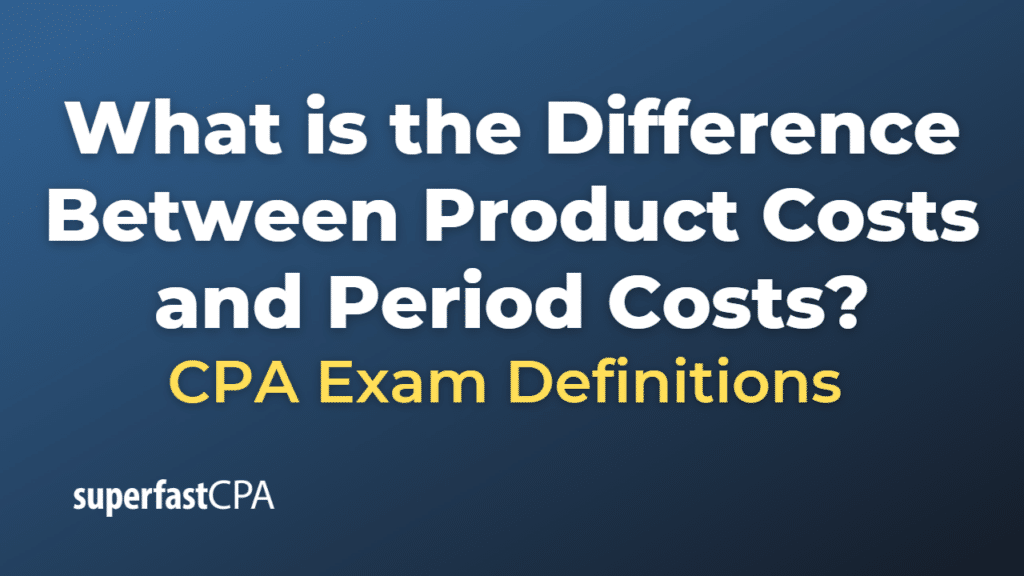Difference Between Product Costs and Period Costs
In cost accounting, costs are categorized based on their relationship with the production process or the time when they are charged to expense. Two such categories are product costs and period costs.
Product Costs:
Product costs, also known as inventorial costs, are all the costs associated with acquiring or producing a product. These costs are initially treated as inventory, an asset on the balance sheet, and they do not become expenses until the product is sold. This is consistent with the matching principle in accounting, which matches expenses with the revenues they help to generate.
Product costs include:
- Direct Materials: The cost of raw materials that go directly into the production of a product.
- Direct Labor: The cost of labor directly involved in the production of a product.
- Manufacturing Overhead: These are all the other costs involved in the manufacturing process that are not direct materials or direct labor, such as utilities for the manufacturing plant, depreciation on manufacturing equipment, factory rent, and so on.
When the product is sold, these costs are then recorded as cost of goods sold (COGS) on the income statement.
Period Costs:
Period costs, on the other hand, are not directly tied to the production process. Instead, they are associated with periods of time and are expensed in the period in which they are incurred, regardless of whether any revenue is generated. They are not included in the cost of inventory or cost of goods sold.
Period costs typically include:
- Selling expenses: These are costs related to the selling and distribution of the product, such as sales commissions, advertising, and shipping costs.
- Administrative expenses: These are costs related to the general management of the business, such as salaries of the executive team, office rent, office supplies, and other general and administrative expenses.
So, the main difference between product costs and period costs is that product costs are tied to the creation of products and become expenses when the product is sold, while period costs are tied to a specific time period and are expensed as they are incurred.
Example of the Difference Between Product Costs and Period Costs
Let’s use a hypothetical example of a furniture manufacturing company, FurnitureCo:
Product Costs Example:
FurnitureCo produces wooden tables. To make these tables:
- It purchases raw wood (a direct material) for $50 per table.
- It pays its workers (direct labor) $30 per table.
- It incurs various manufacturing overhead costs (rent for the factory, electricity for running the machinery, depreciation on the equipment, etc.) that amount to $20 per table.
So, the total product cost per table is $50 (direct materials) + $30 (direct labor) + $20 (manufacturing overhead) = $100 per table. This cost is initially recorded as inventory on the balance sheet. When a table is sold, the $100 associated with producing that table is moved from inventory and recorded as cost of goods sold (COGS) on the income statement.
Period Costs Example:
In the same period, FurnitureCo also incurs the following costs:
- It spends $10,000 on advertising to promote its tables.
- It pays its administrative staff (who aren’t involved in manufacturing) salaries totaling $5,000.
- It pays rent of $2,000 for its corporate office (separate from the factory).
These are all period costs, totaling $10,000 (advertising) + $5,000 (administrative salaries) + $2,000 (office rent) = $17,000. These costs are expensed as they are incurred and will show up on the income statement as selling and administrative expenses. They are not included in the cost of inventory or cost of goods sold, because they are not directly tied to the production of tables.
So, in this example, you can see how product costs and period costs are recorded differently and appear in different places on the financial statements.













